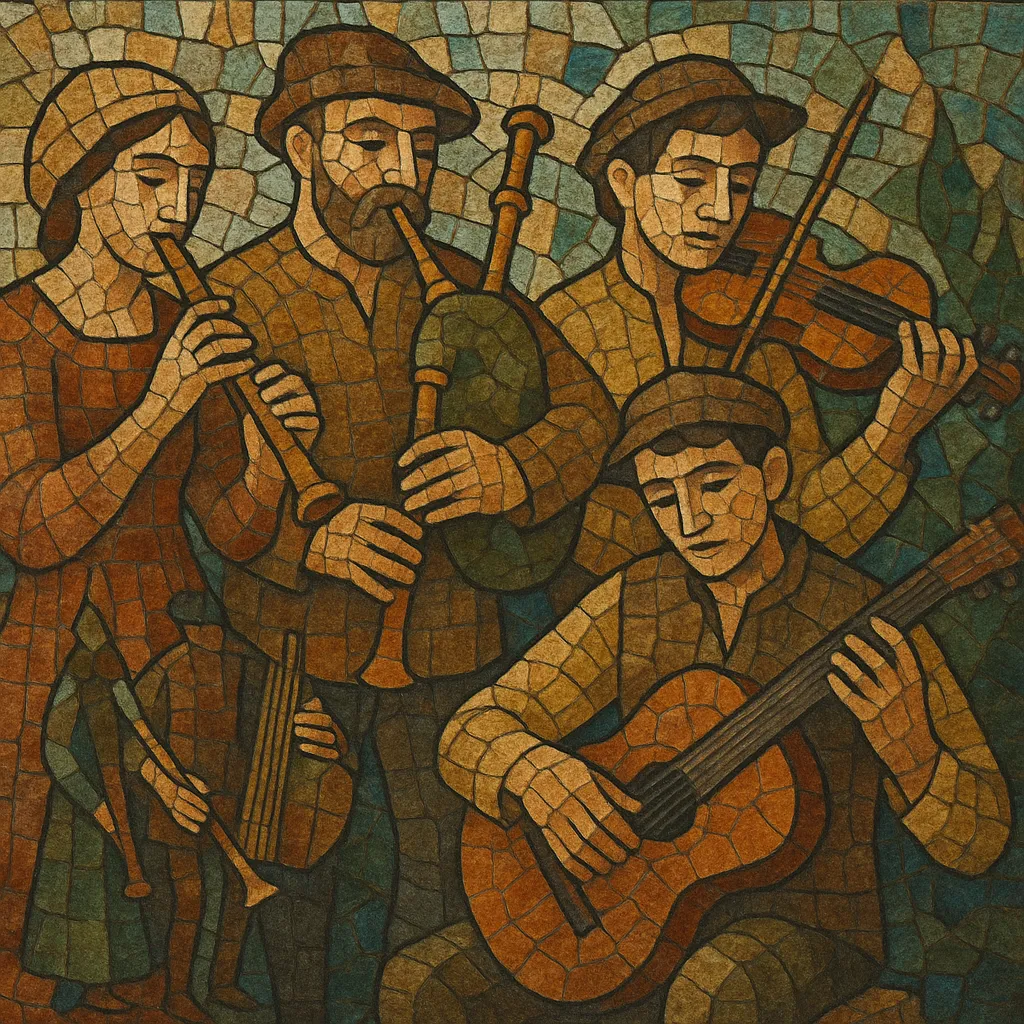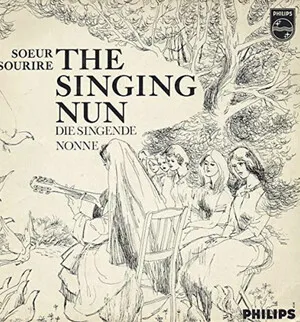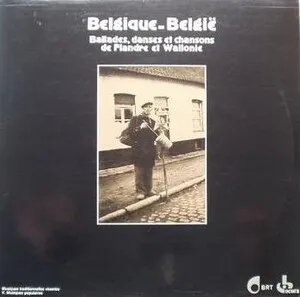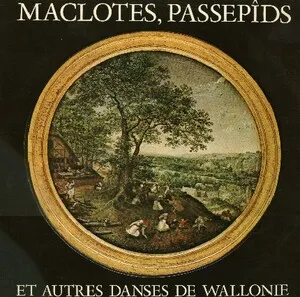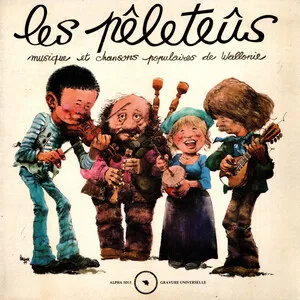Walloon folk music refers to the traditional songs, dance tunes, and ceremonial music of Wallonia, the French‑speaking southern region of Belgium. It includes both instrumental dance repertoires and narrative songs in French and in the Walloon language (walon).
Core dance forms include polka, mazurka, scottish, waltz, branle and marches, typically carried by diatonic accordion, fiddle, hurdy‑gurdy, bagpipes (cornemuse), clarinet, flutes/whistles, guitar and double bass. In the Entre‑Sambre‑et‑Meuse area, fifes and drums lead processional marches tied to local saints’ festivals and town traditions, while Binche carnival airs accompany the famed Gilles.
Melodically, tunes often use modal colors (Dorian and Mixolydian are common), pedal drones (from hurdy‑gurdy or bagpipes), and clear AABB dance structures. Lyrical songs touch on rural life, love, humor, satire, and local history, sustaining a living link between community identity and music.
Walloon folk music grew out of village dances, seasonal rituals, and the oral song traditions of the Walloon language area. While some roots reach back to early modern and even medieval practice (branles, ceremonial music), the 19th century was decisive: the diatonic accordion spread rapidly after the 1820s and helped standardize local dance repertoires (polka, mazurka, scottish, waltz), while fife‑and‑drum bands and small brass ensembles anchored processional traditions.
By the late 1800s, village bals and fairs relied on small traditional ensembles—fiddle, accordion, hurdy‑gurdy, clarinet, and occasionally bagpipes. Processional marches in the Entre‑Sambre‑et‑Meuse region and music for the Carnival of Binche became emblematic; both connect music to civic identity, uniforms, and codified choreographies.
Post‑war urbanization and the spread of recorded popular music reduced everyday use of live folk bands. Nonetheless, collectors, local cultural circles, and folkloric societies safeguarded repertoires, costumes, and instruments, keeping dances and ceremonial music in community calendars.
From the 1970s onward, a wider European folk revival reached Wallonia. Instrument makers, dance clubs (bals folk), and new ensembles revitalized tune collections, emphasized modal playing and ensemble craft, and brought Walloon dance music to concert stages. Research on regional bagpipes, hurdy‑gurdy practice, and song in Walloon fed both historically informed approaches and contemporary creative projects.
Today, Walloon folk thrives through local festivals, community bals, and performing groups. The Carnival of Binche and the Processional Marches of Entre‑Sambre‑et‑Meuse are listed by UNESCO as elements of intangible cultural heritage, anchoring the music’s social function. Contemporary artists continue to record, teach, and compose new pieces in traditional forms, sustaining an intergenerational musical ecosystem.
Write danceable AABB (or AABBCC) tunes with 8‑bar phrases.
•Use characteristic meters/accents:
•Polka in 2/4 with strong off‑beat lift.
•Mazurka in 3/4 with accent on beat 2 or 3 and a lilting swing.
•Scottish (schottische) in 4/4 with even, walking pulse for couples’ steps.
•Waltz in 3/4 with clear bass‑chord‑chord accompaniment.
•Marches in 2/4 or 4/4, steady and cadential for parades.

